High Performance
EWE EFFICIENCY
Pooginook aims to breed easy doing ewes that deliver high weaning percentages and weaning weights, whilst optimising wool production and adult body weight.
We look for moderate size ewes, that produce a high percentage of fast growing lambs. This is not just the ewe who falls pregnant with multiple foetus' but rather the ewe who also raises them to weaning with good body weight gain. Additionally, we balance this with a high fleece value and good doing ability. Her production output is analysed in relation to her adult body weight.
During 2018 - 2020 our 67kg (Standard Reference Weight) ewes delivered on average per year:
- 111% weaned on ewes joined for 5 weeks
- 28.3 kg of lamb at weaning (85 days)
- 8.5 kg of elite white wool at 19.5 micron
Within the maternal breeds, the industry refers to ewe efficiency in terms of:
Ewe efficiency = kg lamb weaned at 100 day / ewe joining weight
For example, Pooginook weaned later than normal in 2020, at 100 days due to wet weather. This particular year, the breeders weaned on average 69% of their own adult body weight, measured at the start of joining. Our top 500 ewes weaned 106% of their own adult body weight.
- Improved carrying capacity
- Improved $/DSE/Ha
- Improved $/ewe
- Ethical litter size to achieve good lambing results
- Improved rearing ability to improve lamb survival and welfare outcomes
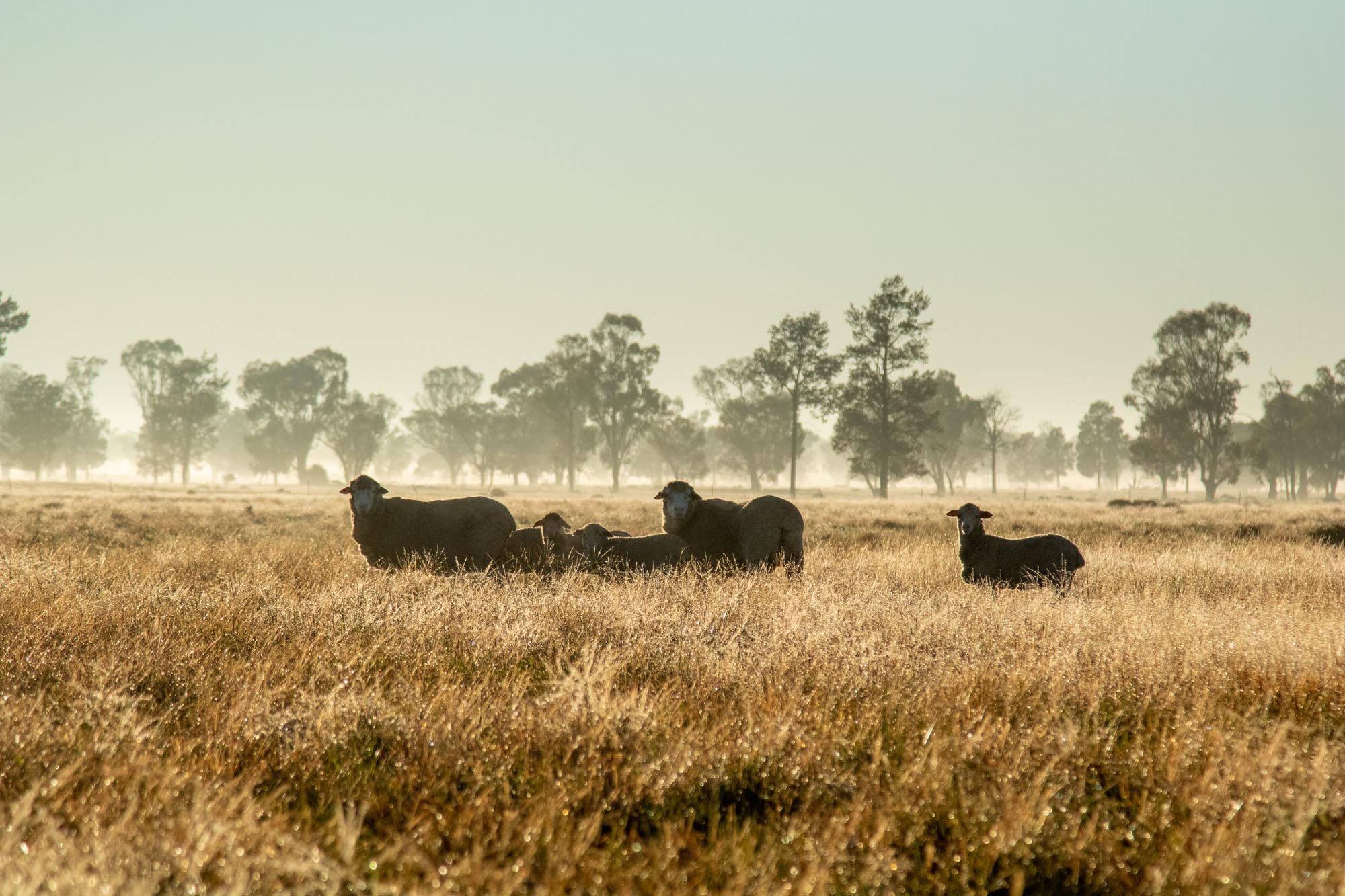
Profitable wool and meat through ethical and sustainable production
-
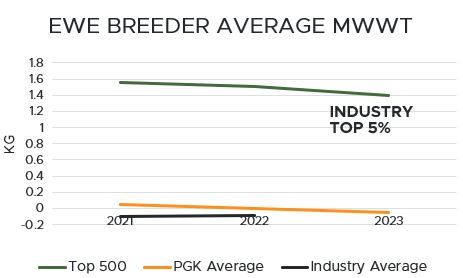
MATERNAL EWE WEANING WEIGHT
Maternal Weaning Weight (kg) - Ewes with more positive MWWT ASBVs will produce daughters that wean heavier lambs. MWWT ASBVs give an estimate of the female progeny’s potential for milk production and ability to provide a better maternal environment.
OUR BREEDING OBJECTIVE
This is a new trait we are looking at to provide more information about the ewe's mothering performance.ASBVs on this graph are PGK breeders showing the genetic trend
-

ADULT BODY WEIGHT (AWT)
Adult Weight (kg) - Ewes with more positive AWT ASBVs produce progeny that grow quicker and are heavier as an adult (>18 months).
OUR BREEDING OBJECTIVE
We aim for a moderate AWT without compromising weaning percentages, growth and fleece value. Hence, there is a balance to be found. As we improve fast early growth, we aim to minimise large increases in adult body weight. To do this, we are selecting for high post weaning weight (PWT) in combination with positive carcass traits and moderate AWT.ASBVs on this graph are PGK breeders showing the genetic trend
-
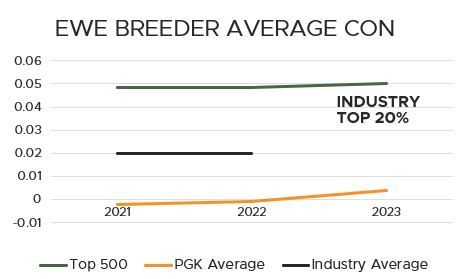
CONCEPTION (CON)
Did the ewe conceive? Describes the genetic difference between animals for conception as adults.
-
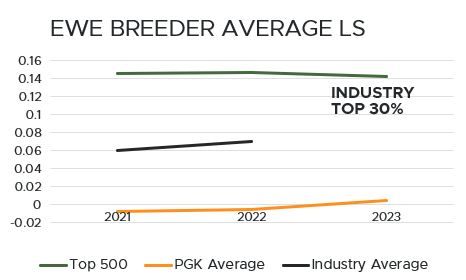
LITTER SIZE (LS)
How many lambs were born? Ewes with higher LS will produce daughters that give birth to more lambs.
-
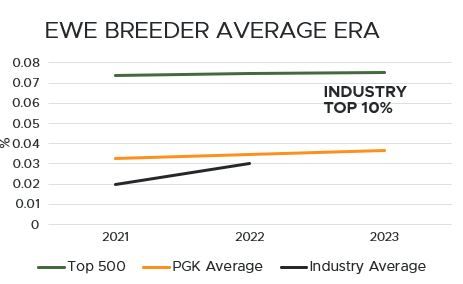
EWE REARING ABILITIY (ERA)
How successfully did the ewe rear her litter? Ewes with higher ERA will produce daughters which rear more of their litter.
-
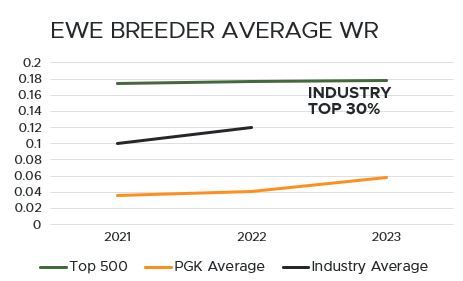
WEANING RATE (WR)
Ewes with more positive WR ASBVs will sire daughters that wean more lambs per ewes joined..
-
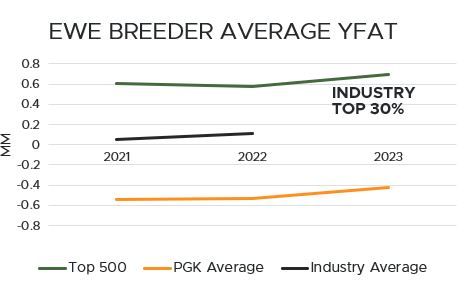
FAT (YFAT)
Fat Depth (mm) - Estimates the genetic difference between animals in GR fat depth. Ewes with more negative FAT ASBVs produce progeny that are leaner. FAT is reported at yearling age (300 days / 10-13 months).
OUR BREEDING OBJECTIVE
Fat increases the doing ability and is a key trait to help balance the ewe maintenance requirement. With some strategic management, Pooginook breeders are efficient in our dry environment. We are aiming to improve this trait with careful selection to avoid loss of main profit drivers such as fleece value. We believe this balance is important as production drives profit, provided maintenance costs are optimised.ASBVs on this graph are PGK breeders showing the genetic trend